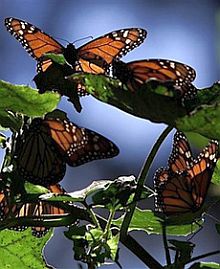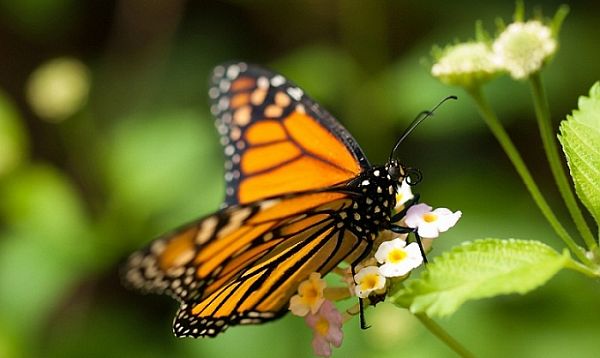Michoacán, Mexico - Though illegal logging inside Mexico's Monarch Butterfly Biosphere Reserve declined by 40 percent in 2015-2016, conservationists said storms and strong winds in March uprooted more than 20,000 trees, fueling fears the habitat could eventually become indefensible.
Nearly 54 hectares (135 acres) of the core of the reserve, which lies west of the capital on the border of the states of Mexico and Michoacán, were hit, the most significant impact since storms during the 2009-10 season ravaged more than 100 hectares (250 acres), said Omar Vidal, director-general of the Mexican arm of the World Wildlife Fund.
 |
Illegal logging, a major threat to the monarchs, can be blamed for only 16.4 percent of the damage, while the felling of trees due to storms and high winds accounts for 74.6 percent, the report says.
"It's a large amount of trees, it's a large amount of forest, so essentially we're losing habitat for the monarch in this sanctuary," Vidal said. "We need to restore areas that have been deforested, either by illegal logging or violent winds, so that the monarch continues visiting these areas in the long run," he added.
Known for their large orange wings with black borders, the monarch is the world's farthest-migrating butterfly, traveling up to 4,500 kilometers each fall from Canada and the United States to their winter home in Mexico.
A World Heritage Site, the Michoacán reserve is the largest preserved monarch wintering site in the Americas. According to Wikipedia, the property "includes more than half of the over wintering colonies of the monarch butterfly's eastern population."
Earlier this year, surveys indicated that the monarch was on the rebound and that numbers could soon reach about 150 million. The increase was attributed to favorable weather at the time and a multi-national effort to plant more milkweed along the butterflies' main migration route, where the butterflies lay their eggs in the spring.
Sources: Fox News Latino • Reuters


